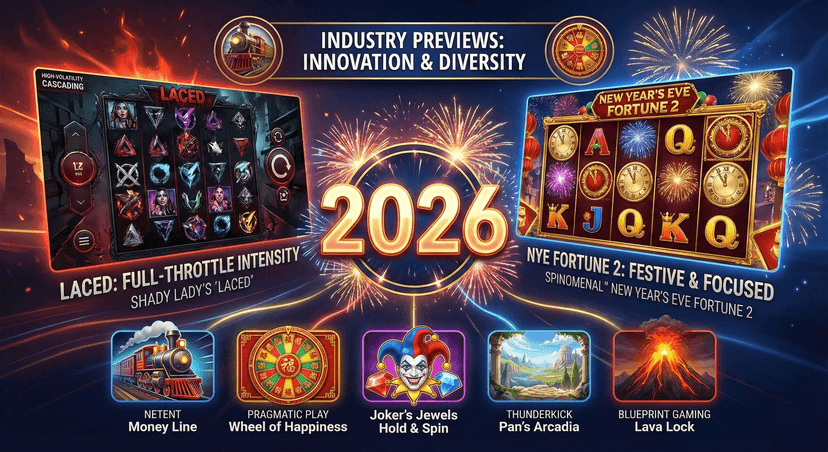The Slot World on the Move

Mobile isn’t just an alternate way to spin the reels anymore—this year, it became the primary stage for online slot play. Our newest data set shows that smartphones and tablets now command four out of every five wagers, marking a decisive leap that reshapes design priorities, marketing budgets, and player expectations. In this article, we’ll explain why the pivot happened so quickly, how everyone from studios to affiliates is adapting, and where we think the numbers will go next.
Mobile’s Rise by the Numbers
| Year | Share of Slot Sessions on Mobile | Year-on-Year Change |
|---|---|---|
| 2022 | 55 % | — |
| 2023 | 60 % | + 5 pts |
| 2024 | 65 % | + 5 pts |
| 2025 | 80 % | + 15 pts |
Three insights stand out:
- Acceleration in 2025: We recorded a fifteen-point surge in a single year—a bigger jump than the previous three years combined.
- Early-Life Mobile Share: During a game’s first two weeks, 74 % of spins come from mobile, confirming that new content is discovered on phones first.
- Long-Term Momentum: Mobile gambling revenue is projected to approach $173 billion by 2030, underscoring that this is not a temporary spike but a structural realignment.
Why Slots Players Switched: Five Core Drivers
- Convenience Phones live in our pockets; laptops stay on desks. Spinning a few rounds is now as easy as checking messages.
- Network Speed Wide 5G coverage eliminated the pain points of lag and buffering, allowing animation-heavy slots to run smoothly on even the smallest screens.
- App-Level Rewards Push notifications, streak bonuses, and location-aware offers work far better on mobile operating systems than on desktop browsers.
- Payment Simplicity Fingerprint wallets and one-tap crypto transfers cut friction. Less friction means more first-time deposits and quicker re-ups.
- Generational Habits Younger cohorts grew up gaming on touchscreens. For them, desktop gambling can feel archaic.
Four Common Player Personas
| Persona | Key Motivation | Preferred Session Length | Typical Device |
|---|---|---|---|
| Morning Commuter | Short bursts of entertainment | 5–7 minutes | Smartphone |
| Lunch-Break Spinner | Quick stress relief | 10 minutes | Smartphone |
| Sofa Strategist | Relaxed evening play | 25 minutes | Tablet |
| Weekend High-Roller | Bigger bets, focused runs | 30+ minutes | Mixed—tablet or desktop for extended streaks |
Studios that tailor volatility levels, auto-spin limits, and bonus cadence to these personas are already seeing higher retention.
How Slots Developers Pivoted
In response to the mobile-first surge, studios have overhauled their design philosophies from the ground up. Most now begin with portrait-first layouts, positioning spin and bet controls where a user’s thumb naturally rests. That ergonomic choice, once a nice-to-have, is now a baseline expectation. Behind the scenes, asset compression has become equally critical: by slimming graphics and audio files, teams routinely drive initial load times below three seconds on standard 4G, which keeps impatient players from bouncing.
Developers are also embracing adaptive volatility modes, allowing users to toggle risk levels mid-game. This elegant solution satisfies both casual dabblers seeking steady payouts and high-variance hunters chasing jackpot thrills. To keep players returning, lightweight live-ops layers introduce timed challenges, mini tournaments, and streak bonuses that refresh daily without bloating the underlying math model or overwhelming first-time visitors.
Design Checklist for 2025
To maintain performance and readability, modern slot teams now follow a concise set of rules. First, pay-table instructions should fit within two thumb scrolls, allowing players to grasp the essentials in seconds. Second, art directors limit each game to three primary animations, striking a balance between visual flair and battery life on older devices.
Audio engineers down-mix all sound cues to ensure clarity on phone speakers while maintaining support for richer playback on headsets. Finally, studios insist on a robust demo mode; because mobile users sample more titles before depositing, friction-free trial play has become a proven driver of long-term retention and acquisition.
Operator and Affiliate Adjustments in the Slots Industry
- Marketing Spend Realignment Budgets once earmarked for desktop web banners are flowing into app-centric acquisition channels, specifically influencer-led TikTok reels and rewarded-video ad networks.
- Payment Gateway Upgrades Operators added biometric log-ins and instant withdrawals to match the “one-handed” expectation born from everyday phone use.
- Vertical Lobbies A swipe-up lobby design—think social feed—now replaces grid-style game menus, letting players browse dozens of slots in seconds.
“If a title won’t load in portrait or finish loading in under three seconds, it risks never being tried,” one operator product lead told us during data collection.
Regional Highlights
- Asia–Pacific: Mobile share tops 85 %. Many markets leapfrogged desktop usage altogether when 4G rolled out.
- Latin America: Rapid smartphone adoption, combined with prepaid billing options, has lifted mobile gambling 10 points in the past 12 months.
- Europe: Even legacy desktop players are shifting; mobile now accounts for just under 70% of spins, up from 58%.
- North America: State-by-state iGaming expansion drives dual-device habits, but mobile still claims 69 % of play.
Challenges in a Mobile-Dominant Era
- Screen-Size Constraints Larger feature sets risk overwhelming small displays. Designers must simplify without dumbing down.
- Regulatory Compliance Age-verification rules are stricter on app stores. Onboarding flows must strike a balance between security and speed.
- Battery Consumption Resource-hungry 3D effects can drain phones; optimization becomes a competitive edge.
- Fragmentation Dozens of screen ratios and GPU levels mean extra QA cycles—or more customer complaints.
Opportunities on the Horizon
Several emerging technologies promise to deepen player engagement in the years ahead. Haptic feedback, for instance, is poised to become mainstream as developers add subtle rumble cues that deliver tactile immersion without cluttering the screen. Augmented-reality bonuses are also gaining traction; two major studios already have AR mini-games in beta that layer bonus rounds over real-world backdrops, hinting at a future where casino content blends seamlessly with a player’s surroundings.
Social features are also expanding, with friend-list leaderboards and cooperative missions now bridging traditional slot gameplay with casual multiplayer experiences. Finally, micro-tournaments—fast ten-minute leaderboard sprints—align perfectly with mobile usage patterns and are proving to boost daily retention.
Action Plan for Stakeholders
Studios should begin by auditing their portfolios for portrait readiness and rebalancing older math models to shorten the ramp-up time into core gameplay. Operators, meanwhile, can improve performance by pushing server-side load balancing to keep initial load times below three seconds during peak traffic and by localizing push-notification content to raise open rates while avoiding blanket spam.
Affiliates will benefit from embedding vertical-video reviews, as horizontal demos underperform in most social algorithms, and from emphasizing one-tap sign-ups with biometric authentication to streamline conversion paths.
Our Outlook for 2026
We expect the mobile share of slot sessions to increase by another three to four points over the next twelve months, stabilizing near the mid-80s. Desktop play will remain relevant for high-denomination users seeking extended runs, yet every new cohort of players will likely default to phones first. Studios that accept “mobile-first” as a baseline—not a separate SKU—stand to capture the lion’s share of growth.
FAQ
Is desktop slot play dying out?
No, but its share is shrinking. Desktop retains value for long sessions and high-resolution art, yet mobile dictates first-touch impressions.
Do higher RTP values matter on mobile?
RTP is platform-agnostic. The difference is that mobile players often jump between titles faster, making intuitive volatility and bonus pacing just as important.
How do I know if a slot is mobile-optimized?
Look for portrait orientation, quick loading, and large on-screen buttons. Most modern lobbies also mark new titles as “mobile-ready.”
Will 5G dramatically change slot design?
It already has. Faster networks enable real-time jackpots, high-frame-rate animation, and synchronous social features without lag.
What’s the next big shift after mobile?
We’re watching extended-reality integrations—AR bonus rounds and lightweight VR overlays—though widespread adoption remains a few years away.



